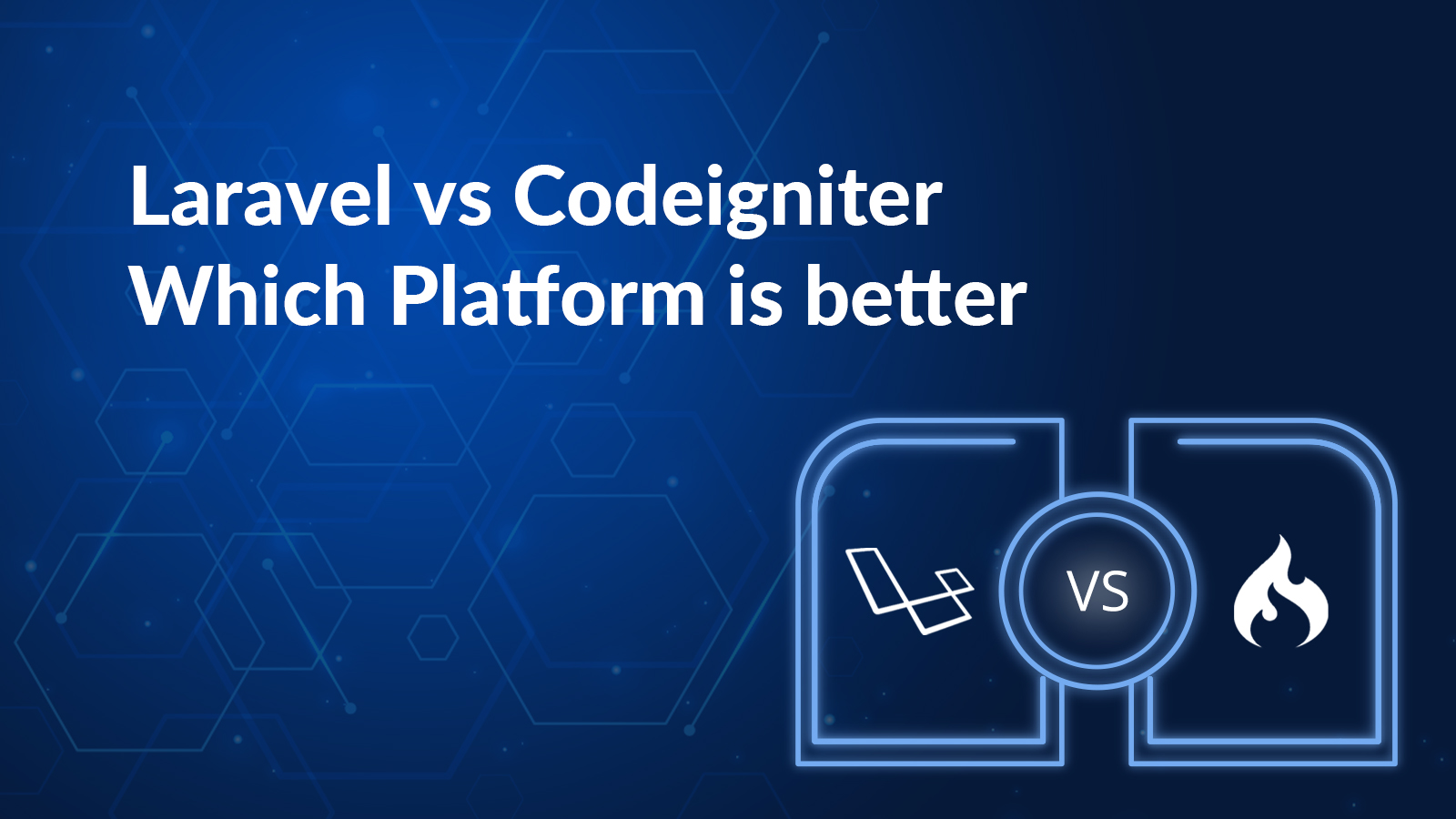For building custom solutions, PHP is a very popular choice among backend developers. Statistics show that PHP is very popular among backend developers. Furthermore, Speeding up the web development process is possible by using PHP frameworks. Thus, PHP frameworks are abundant on the Internet today, among which are two of the most popular ones, Laravel and CodeIgniter. Let us compare Laravel vs CodeIgniter to know which platform is, best suited under which circumstances.
We will compare CodeIgniter and Laravel in this blog to determine which framework is the best. Also, Taking a closer look at the Laravel and CodeIgniter frameworks, we can see how they differ in concept and functionality. Firstly, let’s explore briefly some of the features of each framework.
What is the Laravel Framework?
It was, created by Taylor Otwell for the development of full-featured web applications. The framework is, inspired by another popular PHP-based framework, Symfony, and follows the model-view-controller (MVC) architecture.
The source code can be, found on GitHub and is, licensed under the MIT License. Because it follows accurate and expressive language guidelines, it is a trustworthy PHP framework.
A great deal of development time is, saved by rationalizing web development tasks like routing, authentication, caching, and sessions with Laravel development.
Among Laravel’s features are its innovative approach to retrieving relational databases, a devoted dependency manager, practicalities that make application maintenance and deployment easier, and its focus on syntactic sugar.
What is the CodeIgniter Framework?
The PHP-based CodeIgniter framework is an influential minimalist web framework. Because this toolkit is, designed for developers who are looking for a simple and elegant framework that would help them develop web applications.
For generating dynamic websites utilizing PHP, this PHP framework is one of the best available on the market.
With CodeIgniter, you do not have to depend on MVC development patterns to build your application. So its greatest feature is that it enables plugins from third parties to apply complex functionalities. Thus, let us find out more about Laravel vs Codelgniter.
Furthermore, another admirable feature of CodeIgniter is that it has excellent security and encryption procedures.
Why use Laravel?
- Version control and migration management are simplified using Laravel
- A modular packaging system based on the composer
- Support for Eloquent ORM, the advanced ActiveRecord implementation for interacting with DBs
- Database management systems (DBMS) such as MySQL, PostgreSQL, and SQL Server
- Blade’s templating engine is, one of the features offered
- A sample code interface and support for the artisan command
- Documentation is excellent
- Using an advanced query builder mechanism, Laravel allows you to enforce constraints between multiple DBM objects
- The framework auto-loads, so maintenance and inclusion paths don’t need to be, done manually
- LOC containers enable you to create new tools with the framework
Why use CodeIgniter?
The following image is through https://trends.builtwith.com/framework/PHP.
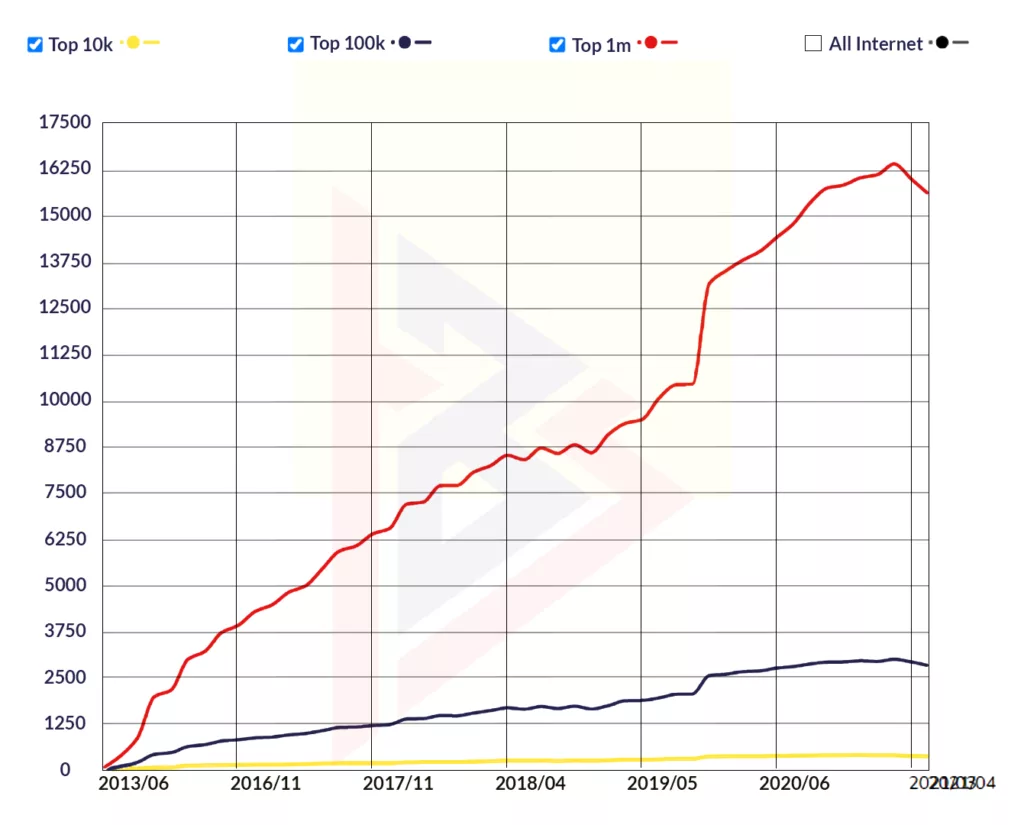
- CodeIgniter community support offers great support and immediate answers
- Documentation that is clear and structured
- Enhances stability and support
- The routing method is simple and straightforward
- It improves the performance of your website by caching it
Laravel Vs CodeIgniter: Statistics
The following statistics provide market usage statistics for Laravel and CodeIgniter based on several studies. These will give a clear picture of Laravel vs Codelgniter.
Statistics Of Laravel Market Usage
Presently, Laravel has a market share of around 0.37% of every existing web framework on the market.
Laravel currently has 66.5k stars on Github and 21.5k live projects. The real-time framework has been, optimized by around 544 contributors.
Laravel is being, used by over 648,115 live websites, with approximately one million (1.78%) from the US.
Read more on, why Golang is the best language for AI.
Statistics Of CodeIgniter Market Usage
Among all the existing web frameworks, CodeIgniter holds a market share of 0.36%.
CodeIgniter has 18.2k stars on Github, along with 7.8k forks.
Almost 1,410,088 websites use CodeIgniter today, including ones from India, Indonesia, Japan, and Vietnam.
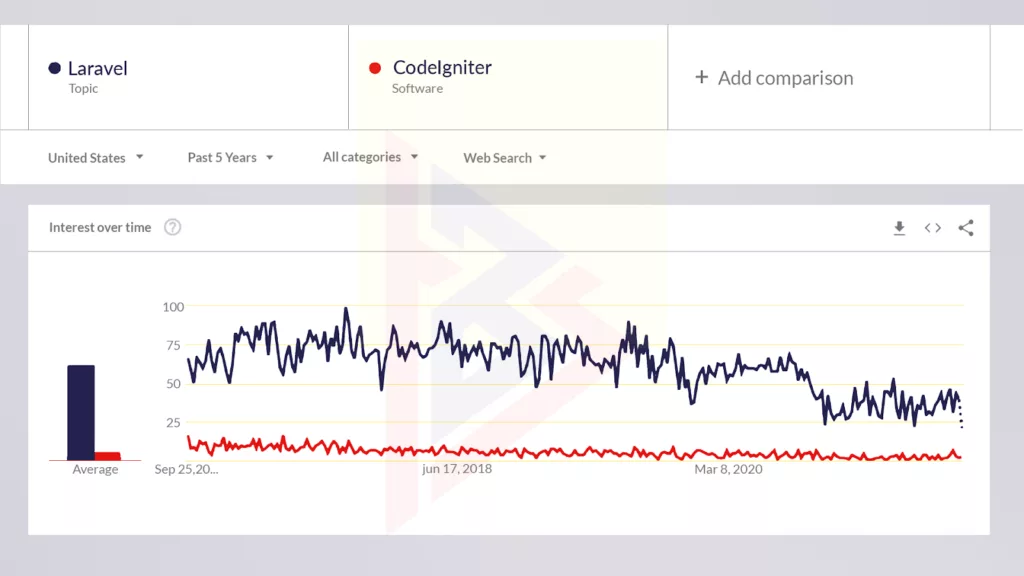
Google Trends shows in the Laravel vs Codelgniter that Laravel has led CodeIgniter in all aspects for the past five years and even longer.
Laravel vs CodeIgniter: Divergence
Laravel and CodeIgniter are two distinct frameworks that are, intended for different purposes. So Laravel allows the web developer to take advantage of articulate object-relational mapping ORM, whereas CodeIgniter lacks this capability. Similarly, Laravel includes modularity in its design, while CodeIgniter demands modules and modular extensions.
Laravel, on the other hand, is a complete full-stack application framework, while CodeIgniter works as a minimalist microframework.
There are a lot of differences between Laravel and CodeIgniter, which have laid the way for CodeIgniter to Laravel migration. As a result, here is a comparison table that details the other differences between the two frameworks. Let’s take a closer look.
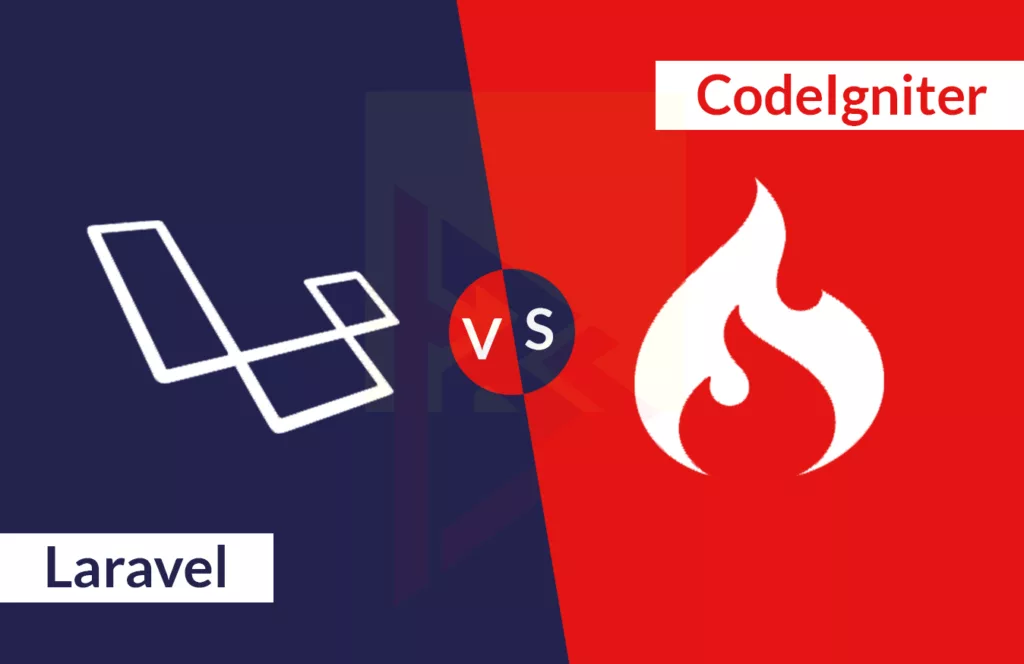
Laravel Vs CodeIgniter – Learning Curve
There are many extra features in Laravel that may not be easy to learn at the beginning.
CodeIgniter is far simpler and easier to learn than Laravel.
Laravel Vs CodeIgniter – Popularity And Latest Trends
As a result of its communicative coding pattern, Laravel is highly popular at the moment. Laravel has, a higher popularity curve than CodeIgniter because it is, favored by almost every experienced developer.
CodeIgniter 2. x is easy to use. This has led to CodeIgniter’s popularity among web developers.
Laravel Vs CodeIgniter – Template Language
Laravel: Blade template engine
CodeIgniter: PHP Proprietary template engine.
Laravel Vs CodeIgniter – Database Model
Laravel: Relational object-oriented
CodeIgniter: Object-oriented
Laravel Vs CodeIgniter – Programming Paradigm
Laravel: Component Oriented
CodeIgniter: Object-oriented event-driven functional
Laravel Vs CodeIgniter – Construction
Model View Controller (MVC) is the typical filing pattern for Laravel. The ‘Artisan’ command-line tool is available there.
MVC is the architectural pattern of CodeIgniter. It eases the onboarding process. Object-oriented programming was, used to create the pattern. The pattern was, then customized to suit the developer’s needs.
Read which one should you select amongst Iconic and React Native for your next project, in our detailed blog.
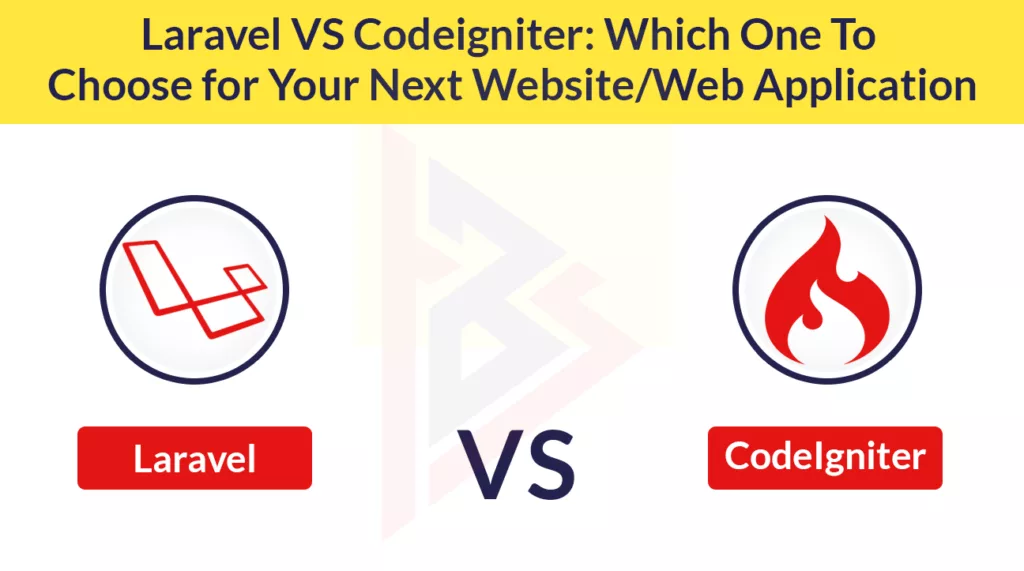
Laravel vs CodeIgniter – Inbuilt Modules
Modularity is, built into Laravel from the ground up. Developers can use this feature to break a given project into tiny modules via the bundle.
As a result, CodeIgniter does not provide any built-in modularity. Modular Extension is, required to create and store modules.
Laravel vs CodeIgniter – API Building And Template Engine
With Blade, Laravel provides an easy-to-use yet robust template engine so by manipulating and elevating the views, the Blade engine allows performance optimization for web applications.
Template engines are, not included in CodeIgniter. So this tool must be, integrated with Smarty, a third-party template engine. In addition to improving the performance of the CodeIgniter website, this allows them to perform all common tasks.
Laravel vs CodeIgniter – Unit Testing
By using PHP Unit, Laravel developers are, able to explore the application code without being interrupted.
CodeIgniter does not come with a unit testing tool. In order to evaluate the code and the value of the application, CodeIgniter developers must use additional unit testing support.
Laravel vs CodeIgniter – HTTP Support
The Laravel framework allows programmers to define custom HTTP routes. In addition For every HTTP route, Laravel developers can generate different URLs.
HTTP is, not entirely supported by CodeIgniter. CodeIgniter developers can generate paths to manage data transmission securely by using URLs.
Laravel vs CodeIgniter – Authentication
Due to the authentication class trait, Laravel developers are able to apply authentication and authorization rules very easily.
Laravel vs CodeIgniter – DBMS Support
Laravel: Compatible with MySQL, Oracle, PostgreSQL, Microsoft SQL Server, IBM DB2, OrientDB, and JDBC.
CodeIgniter: Supports MongoDB, PostgreSQL, Microsoft BI, and MySQL. Furthermore, it provides integration support for several prevalent databases such as Oracle, DB2, and Microsoft SQL Server.
Laravel vs CodeIgniter – Facilitate RESTful API
Laravel developers can generate REST APIs using RESTful Controller methods without putting in additional effort.
CodeIgniter does not clarify the streamlined development of the REST APIs.
Read about the best ASP.NET Tools for development.
Laravel vs CodeIgniter
There are two frameworks, Laravel and CodeIgniter, designed for different purposes. In contrast to CodeIgniter, Laravel offers an object-relational mapping ORM that is eloquent in its approach. Furthermore, CodeIgniter requires its users to construct and maintain modules using modular extensions, whereas Laravel features built-in modularity.
Laravel vs Codelgniter also differs in the fact that CodeIgniter is a minimalistic microframework, whereas Laravel is a full-stack framework. In addition, CodeIgniter and Laravel have the following differences:
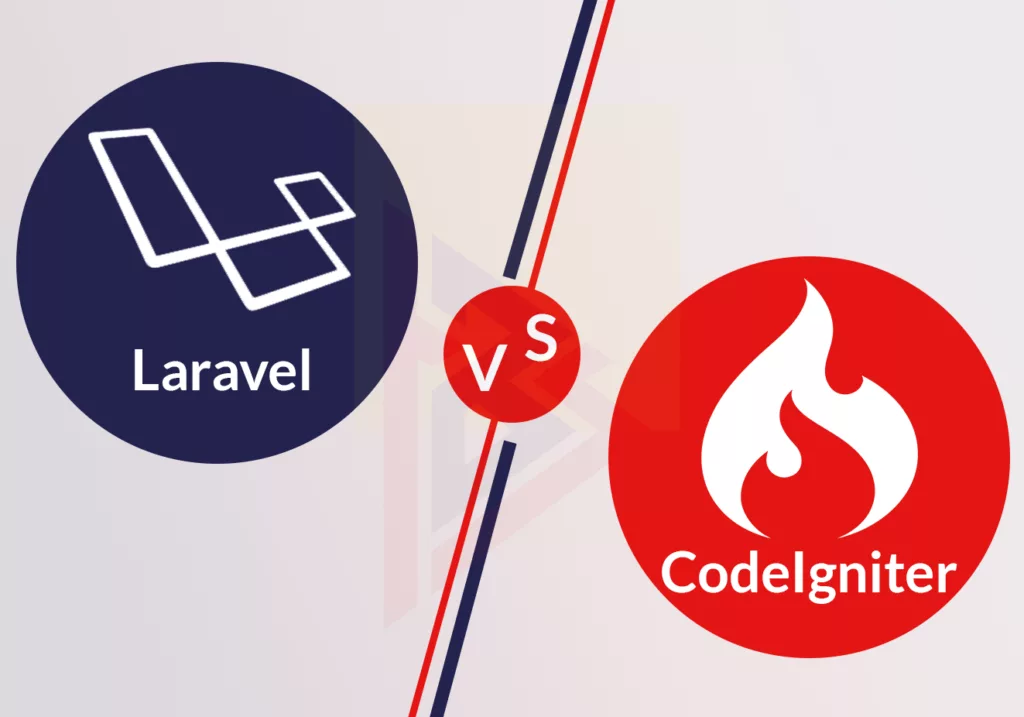
| Key Aspects | Laravel | CodeIgniter |
| Construction and updates | Model-view-controller (MVC) is a common filing pattern in Laravel. The Artisan tool is part of that framework. | The CodeIgniter structure is based on the MVC architectural pattern and provides a simple onboarding process. It follows an object-oriented pattern roughly. Nonetheless, many developers used it according to their requirements. |
| Support of DBMS | OrientDB, IBM DB2, Microsoft SQL Server, MySQL, Oracle, and Oracle, is supported by Laravel. | In addition to PostgreSQL, MySQL, MongoDB, and Microsoft BI, CodeIgniter is also compatible with Oracle, Microsoft SQL Server, and DB2. |
| Inbuilt modules | Modularity is built into this framework. Through the bundle, developers in Laravel can split a project into trivial modules. | There is no built-in modularity in this framework. Developers have to use Modular Extensions to create and maintain modules. |
| Popularity and latest trends | The communicative coding pattern, which is preferred by experienced developers, makes it highly popular in the current era. CodeIgniter is less popular. | Most web developers prefer CodeIgniter because of its ease of use in version 2.x. |
| Facilitate RESTful API | By using Laravel’s RESTful Controller methods, developers can easily create a collection of REST APIs without investing extra time and effort. | REST APIs cannot be simplified by it. |
| Online support and libraries | The official documentation is very detailed and helpful with Laravel. However, Laracast.com offers additional help. | You can utilize the site’s valuable guide without having prior knowledge of CodeIgniter, which offers adequate inbuilt functionality. |
| API building and template engine | The Blade template engine is simple, yet robust. By manipulating and enhancing views, PHP programmers can enhance the performance of the web application. | There is no built-in template engine. Developers should integrate it with Smarty, a third-party templating engine tool. As a result, they can execute common tasks and improve the performance of the CodeIgniter website. |
| Template language | Blade template engine | PHP proprietary |
| Database model | Relational object-oriented | Object-oriented |
| Programming paradigm | Component oriented | Object-oriented event-driven functional |
| Authentication | With Laravel’s authentication class trait, its developers can easily implement authentication authorization and authentication rules. | Authentication traits are not included with CodeIgniter so the developers need to authorize and authenticate the users by scripting custom CodeIgniter extensions. |
| HTTP support | It allows its programmers to describe custom HTTP routes. Laravel developers can form a precise URL for each HTTP route. | Beginners find it simple and easy to learn and utilize CodeIgniter in comparison to Laravel. |
| Learning curve | It has various additional traits that are not easy to learn, at least for beginners. | The beginners find it simple and easy to learn and utilize CodeIgniter in comparison to Laravel. |
| Unit testing | Laravel allows its developers to check application code carefully and uninterruptedly with the assistance of the PHP Unit. | CodeIgniter does not have an inbuilt unit testing tool. Hence, its developers ought to use extra unit testing support to evaluate the value of the application as well as the code. |
Which Web Framework to Use: Laravel vs Codelgniter
The above table provides a detailed comparison of two popular PHP frameworks – CodeIgniter and Laravel so their popularity cannot be, overstated. Both CodeIgniter and Laravel are exceptional PHP frameworks that are, well-suited for different purposes. You can choose one of these frameworks based on your business needs and type of web project. Thus, the following points between Laravel and Codelgniter development will help us find out which one to use and when.
When – CodeIgniter is recommended
- You need a minimalistic framework without any built-in tools for database management or testing
- An eCommerce web platform can be, created with CodeIgniter
- Because it is suitable for simple and scalable websites.
- The advantage of CodeIgniter is its speed So It runs and develops at a much faster rate than Laravel.
Laravel is a better option for you if –
- With its advanced features, Laravel is suitable for large and complex websites
- This makes it ideal for database-driven web applications that handle large datasets
- Laravel is well-known to your team.
- For a full-stack framework that will cover the entire web development lifecycle, choose Laravel.
The comparison of Laravel vs CodeIgniter in this blog is, expressed in an elaborative manner so that both the users and the tech stakeholders can make an informed decision.
Read About .NET 6 here, in our blog.
Conclusion – Laravel vs Codelgniter
For developing web applications, both Laravel and CodeIgniter are excellent PHP frameworks. In comparison to CodeIgniter, learning Laravel may prove to be a bit challenging for beginners, but once you master it, it offers you a number of advanced features that make your website more effective.
CodeIgniter is a robust PHP framework that is easy to learn and is suitable for projects that are trivial or don’t require any additional authentication features.
From the above Laravel vs CodeIgniter comparison, you may easily see that CodeIgniter lacks precise features for database schema migration, whereas Laravel makes it easier with its database agnostic migrations.
Depending on the requirements of your business project, our experienced team at TechnoBrains can help you build web applications in Laravel or CodeIgniter.
